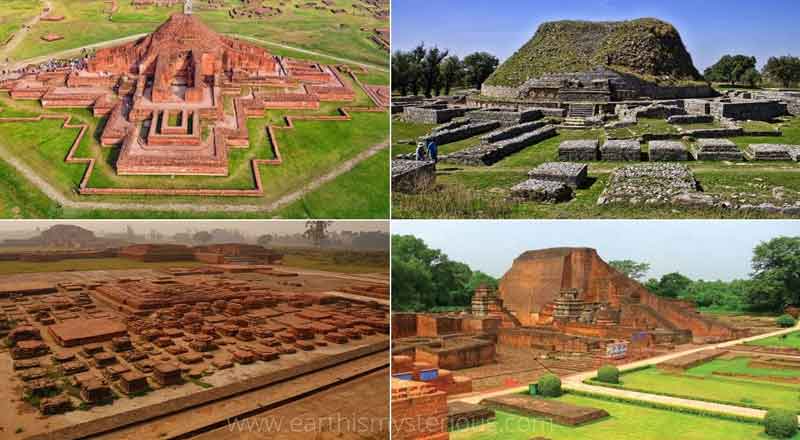Prime Minister Narendra Modi inaugurated the new campus of Nalanda University in Rajgir, Bihar on Wednesday. The event was attended by External Affairs Minister S Jaishankar and ambassadors from 17 nations. The inauguration marked the beginning of a new chapter for the university, which offers 137 scholarships to international students.
Nalanda University is structured around six schools: the School of Buddhist Studies, Philosophy & Comparative Religions; the School of Historical Studies; the School of Ecology and Environmental Studies; and the School of Sustainable Development and Management. These schools reflect the university’s rich academic focus spanning diverse disciplines.
The university holds a significant place in history as it traces its origins to the ancient Nalanda University, established approximately 1600 years ago. Regarded as one of the world’s earliest residential universities, the original Nalanda was designated a UNESCO World Heritage Site in 2016 due to its historical importance.
Situated near the ancient ruins, the new campus of Nalanda University boasts modern amenities tailored for academic excellence and holistic development. Key facilities include two academic blocks housing 40 classrooms with a combined seating capacity of approximately 1900 students. Additionally, there are two auditoriums, each accommodating up to 300 individuals, and a student hostel capable of accommodating around 550 students.
Other amenities on the campus include an International Centre, an Amphitheatre accommodating up to 2000 people, a Faculty Club, and a Sports Complex, among others. Notably, the campus has achieved ‘Net Zero’ status as a green campus, boasting self-sustainability through initiatives like a solar plant, domestic and drinking water treatment facilities, a water recycling plant for wastewater reuse, 100 acres of water bodies, and various other environmentally friendly features.
The inauguration of the new campus marks a milestone in the revitalization of Nalanda University, blending historical significance with modern educational infrastructure. It signifies India’s commitment to fostering global academic collaboration and promoting sustainable development in higher education.
Rediscovering Five Influential Universities of Ancient India
Throughout history, the Indian subcontinent has been a cradle of ancient learning, nurturing some of the world’s oldest and most prestigious centers of knowledge. Beyond the renowned Nalanda University, several other venerable institutions flourished, each leaving an indelible mark on education, philosophy, and science. Despite their eventual decline due to invasions and political upheavals, these universities continue to shape modern scholarship and our understanding of early educational traditions. Here’s a glimpse into five such institutions:
Takshashila: The Cradle of Learning
Takshashila, dating back to at least the 6th century BCE and located in present-day Pakistan, stands as one of the world’s earliest universities. Revered for its comprehensive curriculum encompassing medicine, grammar, logic, philosophy, and astronomy, Takshashila attracted students from across Asia. Notable alumni include Panini, Charaka, and Chanakya, whose contributions resonate through centuries, underscoring Takshashila’s pivotal role in shaping ancient Indian scholarship.
Vikramshila University: Beacon of Buddhist Wisdom
Founded in the late 7th century CE by Pala king Dharampala in Bihar, Vikramshila University epitomized the Pala dynasty’s commitment to education. With over 100 teachers and more than 1,000 students, Vikramshila was a flourishing center for Buddhist studies, philosophy, and tantra shastra. Its destruction in 1203 CE by Bhaktiyar Khilji marked a tragic loss of knowledge and culture, yet its legacy endures through figures like Atiśa Dipankara, influencing Tibetan Buddhism profoundly.
Mithila University: Jewel of Sanskrit Literature
Mithila University, nestled in Bihar, India, was renowned for its contributions to Sanskrit literature, arts, and sciences. Historically associated with King Janaka’s kingdom, it hosted intellectual gatherings and nurtured luminaries like Vidyapati and Ganesha Upadhyaya. Despite facing the challenges of time and invasions, Mithila’s rigorous academic traditions and cultural influence persisted, enriching India’s literary and philosophical landscape.
Vallabhi University: Nexus of Buddhist Scholarship
Established in Gujarat in the 5th century CE, Vallabhi University thrived as a center of Buddhist philosophy, logic, mathematics, and medicine. It attracted scholars from afar, including Buddhaghosa, who significantly contributed to Buddhist literature. Vallabhi’s scholarly ambiance and vibrant cultural exchanges flourished until Mahmud of Ghazni’s invasions in the 12th century, marking a pivotal moment in its decline while leaving a lasting legacy in Buddhist thought.
Jagaddala University: Gateway to Vajrayana Buddhism
Founded during the Pala dynasty in present-day Bangladesh, Jagaddala University was celebrated for its studies in Buddhist philosophy, mathematics, astronomy, and medicine. It served as a beacon of Vajrayana Buddhism, fostering renowned scholars like Dharmapala. Despite succumbing to the tides of history in the 12th century, Jagaddala’s ruins continue to evoke the spirit of ancient learning, preserving Bengal’s rich cultural heritage and scholarly achievements.
These universities, with their profound contributions to academia and culture, exemplify India’s enduring legacy as a hub of intellectual pursuit and knowledge dissemination. While time may have dimmed their physical presence, their influence resonates through the corridors of history, inspiring generations to explore the depths of ancient wisdom and chart new paths in the pursuit of knowledge.
(With inputs from agencies)





